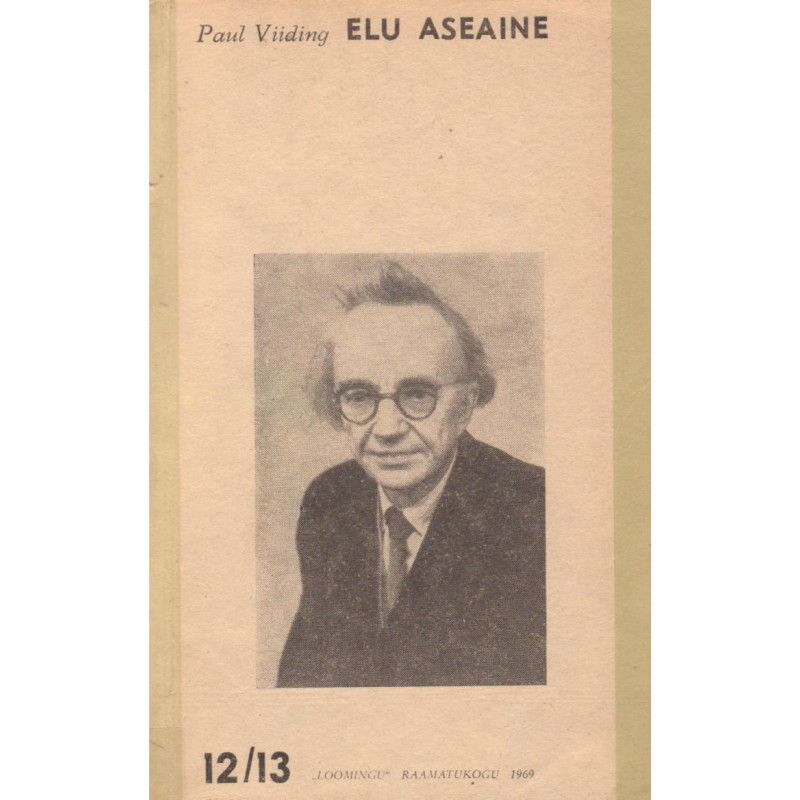



Paul Viiding
Tallinn: Perioodika, 1969
190 lk
Loomingu Raamatukogu ; 1969, 12/13 (592/593)
Softcover used ex-library book in fair condition
The novel Elu aseaine (translated as The Substitute for Life), published at the turn of 1939/1940, stands somewhat apart in the author's body of work—not only because it is their only novel. The book shows connections to the author’s earlier short stories, primarily through the setting, the characters moving within it, and the general style of depiction. In the novel, the seeker and observer of problems recede into the background, giving way to an impartial narrator.
Contemporary critics of the time criticized the novel for lacking a firmer ideological foundation. Numerous thematic beginnings that make the book intriguing are left undeveloped, as if the author feared straying from the genre conventions of the time.
Objectively, Elu aseaine is a Bildungsroman—a story of how a socially inexperienced and shy young man works diligently until external temptations lead him astray, causing his spirit to weaken. The talented youth becomes a gambler, a borrower, a loafer, and ultimately a parasite, living a life devoid of purpose. A productive and creative life dwindles into a mere substitute for life.
If desired, the novel can be read as a didactic work, though this was not the impartial author’s intent. The book is more convincing in its depiction of the social environment and less so in its psychological depth; key turning points in the protagonist's decline are left without deeper justification.